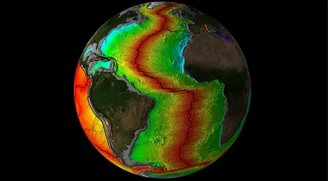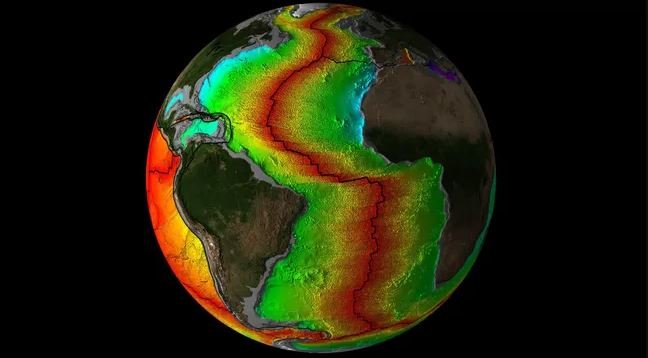In a recent study published in the scientific journal Geology, a team of researchers noted: The subduction zone detected in the Strait of Gibraltar could create a sort of ‘Ring of Fire’ with a chance of invading and ‘swallowing’ the Atlantic Ocean. According to the data compiled by scientists, the subduction zone in question is located in the ocean corridor between Portugal and Morocco.
This region, also known as the Gibraltar arc, formed in the Mediterranean region and began migrating westward about 30 million years ago, but has remained in the current region for the last 5 million years. Therefore, geologists are trying to understand why this phenomenon has stopped and has not yet returned to full activity.
The article explains that the subduction zone is actually in a quiet period and will likely remain in this state for another 20 million years. Only then will the Gibraltar arc be reactivated by subduction.
To understand these results, scientists performed computer simulations. Period from the birth of the trench to its current evolution – may have occurred between 34 and 23 million years ago.
“Subduction invasion is inherently a three-dimensional process that requires advanced modeling tools and supercomputers that were not available a few years ago. We can now simulate in great detail the formation of the Gibraltar Arc, as well as how it may develop in the deep future. Two subduction zones on the other side of the Atlantic there are more – the Lesser Antilles in the Caribbean and the Scottish Arc near Antarctica,” said Portuguese co-author and collaborator João Duarte from the Faculty of Science at the University of Lisbon.
‘Ring of Fire’ in the Atlantic Ocean
During the simulation, they noticed that the strength of the arc had decreased significantly over the last 5 million years. In the same experiment, they simulated the fate of the event in the Strait of Gibraltar over the next 20 million years.
The team discovered It is stated that this phenomenon could invade the ocean and contribute to a subduction system called the ‘Ring of Fire’ surrounding the Atlantic Ocean. Something similar is already happening in the Pacific Ocean region.

Approximately Scientists say that in 20 million years the subduction zone will invade the ocean and initiate a process of crustal recycling on the east side of the Atlantic. According to the researchers, the study is important because it shows how such events play an important role in the geological evolution of the Earth.
“The results show that after a period of inactivity the arc will propagate deeper into the Atlantic. The models also show how a subduction zone starting in a closing ocean (the Ligurian Ocean) can migrate into a new opening ocean (the Atlantic) through a narrow ocean corridor.” “Subduction intrusion is likely a common subduction initiation mechanism in Atlantic-type oceans and is a fundamental process in the recent geological evolution of the Earth,” the study explains.
Did you like the content? Always stay up to date with the latest studies on the Atlantic Ocean at TecMundo. If you wish, take the opportunity to learn why current earthquakes may echo earthquakes more than 100 years old.
Source: Tec Mundo
I’m Blaine Morgan, an experienced journalist and writer with over 8 years of experience in the tech industry. My expertise lies in writing about technology news and trends, covering everything from cutting-edge gadgets to emerging software developments. I’ve written for several leading publications including Gadget Onus where I am an author.













